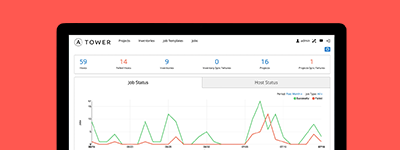ec2_eip - associate an EC2 elastic IP with an instance.
New in version 1.4.
Synopsis
This module associates AWS EC2 elastic IP addresses with instances
Requirements (on host that executes module)
- python >= 2.6
- boto
Options
| parameter | required | default | choices | comments |
|---|---|---|---|---|
| aws_access_key |
no | AWS access key. If not set then the value of the AWS_ACCESS_KEY_ID, AWS_ACCESS_KEY or EC2_ACCESS_KEY environment variable is used. aliases: ec2_access_key, access_key | ||
| aws_secret_key |
no | AWS secret key. If not set then the value of the AWS_SECRET_ACCESS_KEY, AWS_SECRET_KEY, or EC2_SECRET_KEY environment variable is used. aliases: ec2_secret_key, secret_key | ||
| device_id (added in 2.0) |
no | The id of the device for the EIP. Can be an EC2 Instance id or Elastic Network Interface (ENI) id. aliases: instance_id | ||
| ec2_url |
no | Url to use to connect to EC2 or your Eucalyptus cloud (by default the module will use EC2 endpoints). Ignored for modules where region is required. Must be specified for all other modules if region is not used. If not set then the value of the EC2_URL environment variable, if any, is used. | ||
| in_vpc (added in 1.4) |
no | allocate an EIP inside a VPC or not | ||
| profile (added in 1.6) |
no | uses a boto profile. Only works with boto >= 2.24.0 | ||
| public_ip |
no | The elastic IP address to associate with the instance. If absent, allocate a new address | ||
| region |
no | The AWS region to use. If not specified then the value of the AWS_REGION or EC2_REGION environment variable, if any, is used. See http://docs.aws.amazon.com/general/latest/gr/rande.html#ec2_region aliases: aws_region, ec2_region | ||
| release_on_disassociation (added in 2.0) |
no | whether or not to automatically release the EIP when it is disassociated | ||
| reuse_existing_ip_allowed (added in 1.6) |
no | Reuse an EIP that is not associated to an instance (when available), instead of allocating a new one. | ||
| security_token (added in 1.6) |
no | AWS STS security token. If not set then the value of the AWS_SECURITY_TOKEN or EC2_SECURITY_TOKEN environment variable is used. aliases: access_token | ||
| state |
no | present |
|
If present, associate the IP with the instance. If absent, disassociate the IP with the instance. |
| validate_certs (added in 1.5) |
no | yes |
|
When set to "no", SSL certificates will not be validated for boto versions >= 2.6.0. |
Examples
- name: associate an elastic IP with an instance ec2_eip: device_id=i-1212f003 ip=93.184.216.119 - name: associate an elastic IP with a device ec2_eip: device_id=eni-c8ad70f3 ip=93.184.216.119 - name: disassociate an elastic IP from an instance ec2_eip: device_id=i-1212f003 ip=93.184.216.119 state=absent - name: disassociate an elastic IP with a device ec2_eip: device_id=eni-c8ad70f3 ip=93.184.216.119 state=absent - name: allocate a new elastic IP and associate it with an instance ec2_eip: device_id=i-1212f003 - name: allocate a new elastic IP without associating it to anything action: ec2_eip register: eip - name: output the IP debug: msg="Allocated IP is {{ eip.public_ip }}" - name: another way of allocating an elastic IP without associating it to anything ec2_eip: state='present' - name: provision new instances with ec2 ec2: keypair=mykey instance_type=c1.medium image=emi-40603AD1 wait=yes
Notes
Note
This module will return public_ip on success, which will contain the public IP address associated with the instance.
Note
There may be a delay between the time the Elastic IP is assigned and when the cloud instance is reachable via the new address. Use wait_for and pause to delay further playbook execution until the instance is reachable, if necessary.
Note
This module returns multiple changed statuses on disassociation or release. It returns an overall status based on any changes occuring. It also returns individual changed statuses for disassociation and release.
Note
If parameters are not set within the module, the following environment variables can be used in decreasing order of precedence AWS_URL or EC2_URL, AWS_ACCESS_KEY_ID or AWS_ACCESS_KEY or EC2_ACCESS_KEY, AWS_SECRET_ACCESS_KEY or AWS_SECRET_KEY or EC2_SECRET_KEY, AWS_SECURITY_TOKEN or EC2_SECURITY_TOKEN, AWS_REGION or EC2_REGION
Note
Ansible uses the boto configuration file (typically ~/.boto) if no credentials are provided. See http://boto.readthedocs.org/en/latest/boto_config_tut.html
Note
AWS_REGION or EC2_REGION can be typically be used to specify the AWS region, when required, but this can also be configured in the boto config file
This is a Core Module
For more information on what this means please read Core Modules
For help in developing on modules, should you be so inclined, please read Community Information & Contributing, Helping Testing PRs and Developing Modules.


